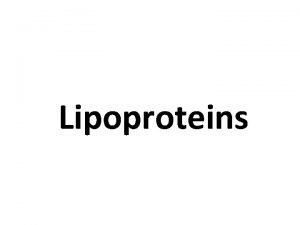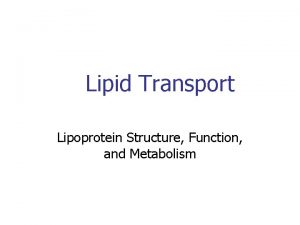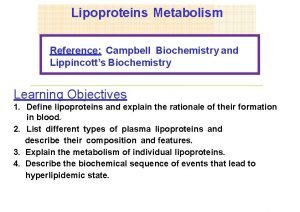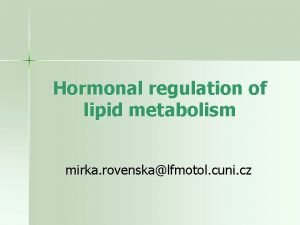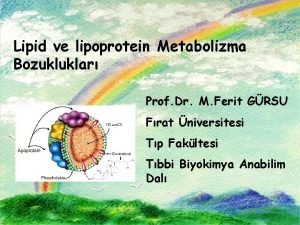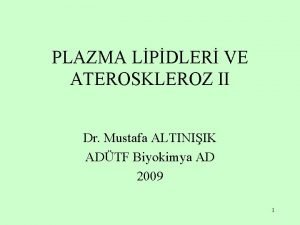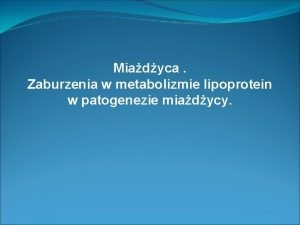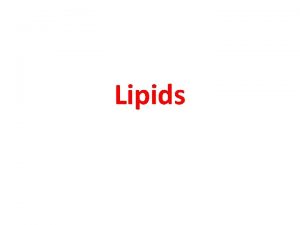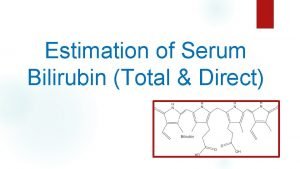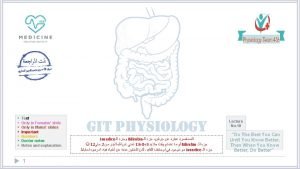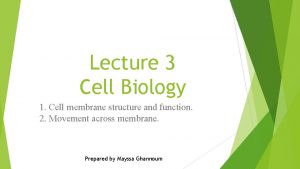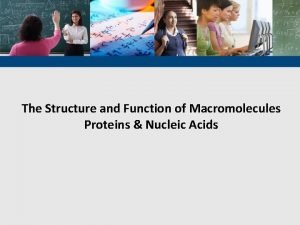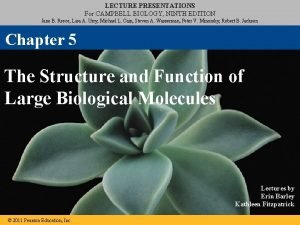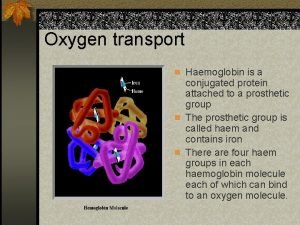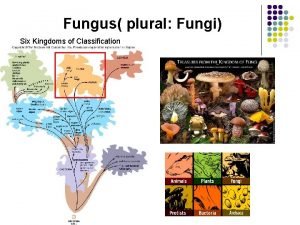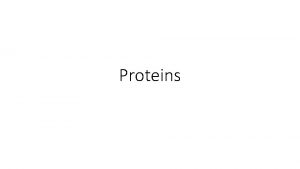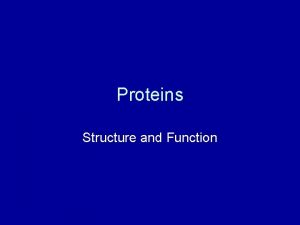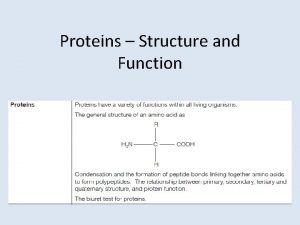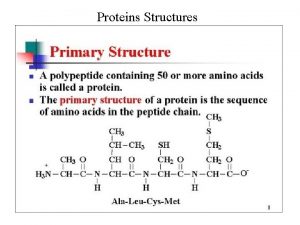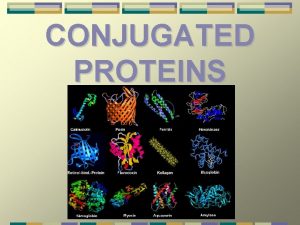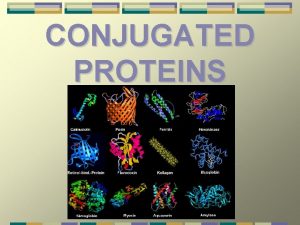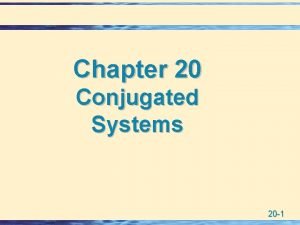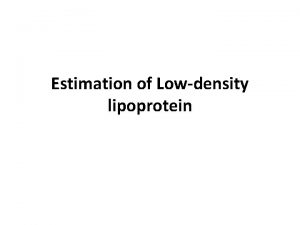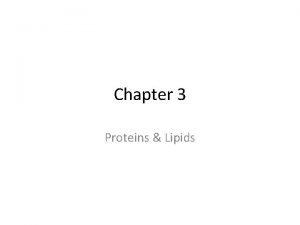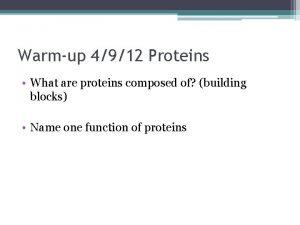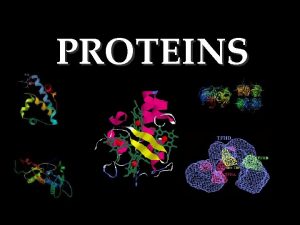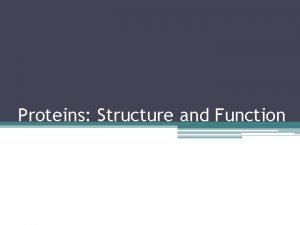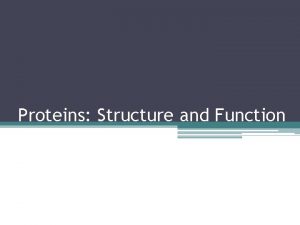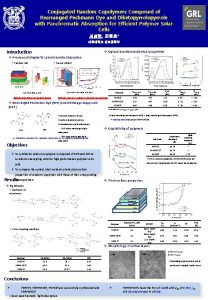Lipoprotein Structure and Function Are conjugated proteins composed
















- Slides: 16

Lipoprotein Structure and Function Are conjugated proteins, composed of core and surface n LP core n n n Triglycerides Cholesterol esters LP surface n n n Phospholipids Proteins Cholesterol

n n n Lipids are water insoluble Present in the blood in the form of lipoproteins which are water soluble They have an outer polar surface, which makes them water soluble.

Composition and characteristics

Separation by ultracentrifugation n n Four distinct groups based on their density Chylomicron (d<0. 96), Very low density lipoprotein(VLDL, d=0. 96 -1. 006) Low density lipoprotein (LDL, d=1. 006 -1. 063) High density lipoprotein (HDL, d=1. 063 -1. 21).

Separation by Electrophoresis n Based on difference in their mobilization in an electric field

Plasma Lipoproteins Classes & Functions Chylomicrons n n n Synthesized in small intestine (mucosal cells ) To mobilize dietary lipids Transport dietary lipids 98% lipid, large sized, lowest density Apo B-48 n n Apo C-II n n Receptor binding Lipoprotein lipase activator Apo E n Remnant receptor binding

Chylomicron Metabolism n n Nascent chylomicron (apo B-48, apo–A) before they enter circulation Mature chylomicron (+apo C & apo E) Lipoprotein lipase found on the surface of endothelial cells lining the capillaries in muscle and adipose tissues removes the fatty acids of triglycerides Chylomicron remnant n n Apo C removed Removed in liver

n n n Substantial portion of the phospholipid, apo -A and apo-C are transferred to HDLs during the process of fatty acid removal Chylomicron remnant containing primarily cholesterol. apo-E and apo-B-48 are taken up by the liver though the interaction with the chlyomicron remnant receptor

Plasma Lipoproteins Classes & Functions n Very Low Density Lipoprotein (VLDL) n n Synthesized in liver Transport endogenous triglycerides (liver to peripheral tissues 90% lipid, 10% protein Apo B-100 n n Apo C-II n n Receptor binding LPL activator liberates free fatty acids that are taken up by the adipose tissue and muscle Apo E n Remnant receptor banding

VLDL Metabolism n n Nascent VLDL (B-100) + HDL (apo C & E) = VLDL LPL hydrolyzes TG forming IDL n n 75% of IDL removed by liver n n IDL loses apo C-II (reduces affinity for LPL) Apo E and Apo B mediated receptors 25% of IDL converted to LDL by hepatic lipase n Loses apo E to HDL

Plasma Lipoproteins Classes & Functions n Intermediate Density Lipoprotein (IDL) n n n Synthesized from VLDL during VLDL degradation Triglyceride transport and precursor to LDL Apo B-100 n n Apo C-II n n Receptor binding LPL activator Apo E n Receptor binding

Plasma Lipoproteins Classes & Functions n Low Density Lipoprotein (LDL) n n n Synthesized from IDL Half life of LDL in blood is 2 days transport Cholesterol from liver to peripheral tissues 75% of the plasma cholesterol is incorporated into the LDL particles are derived from VLDL, a small part is directly released from liver 78% lipid (58% cholesterol & CE) Apo B-100 n Receptor binding Interaction of LDL with LDL receptor

LDL Metabolism n n LDL receptor-mediated endocytosis About 75% of LDL are taken up by the liver, adrenal and adipose tissue cells by LDL receptor mediated endocytosis n LDL receptors on ‘coated pits’ n n Endocytosis n n n Clathrin: a protein polymer that stabilizes pit Loss of clathrin coating uncoupling of receptor, returns to surface Fusing of endosome with lysosome n Frees cholesterol & amino acids

Plasma Lipoproteins Classes & Functions n High Density Lipoprotein (HDL) n n n Synthesized in liver and intestine as protein rich discoid particles Reservoir of apoproteins Reverse cholesterol transport 52% protein, 48% lipid, 35% C & CE Apo A n n Apo C n n Activates lecithin-cholesterol acyltransferase (LCAT) Activates LPL Apo E n Remnant receptor binding

HDL Metabolism: Functions n Apoprotein exchange n n n provides apo C and apo E from VLDL and chylomicrons Reverse cholesterol transport Discoid HDLs are converted into spherical lipoprotein through the accumulation of cholesterol ester.

Reverse cholesterol transport n n Uptake of cholesterol from peripheral tissues (binding by apo-A-I) Esterification of HDL-C by LCAT n n n LCAT activated by apo. A 1 Transfer of CE to lipoprotein remnants (IDL and CR) by CETP removal of CE-rich remnants by liver, converted to bile acids and excreted
 Conjugated proteins
Conjugated proteins Mikael ferm
Mikael ferm Proteolipids vs lipoprotein
Proteolipids vs lipoprotein Structure lipoprotein
Structure lipoprotein Types of lipoprotein and their functions
Types of lipoprotein and their functions Lipoprotein lipase vs hormone sensitive lipase
Lipoprotein lipase vs hormone sensitive lipase Lipoprotein
Lipoprotein Hiperlipoproteinemi
Hiperlipoproteinemi Zaburzenia metabolizmu lipoprotein i inne lipidemie
Zaburzenia metabolizmu lipoprotein i inne lipidemie Function of lipids
Function of lipids Types of jaundice in newborn
Types of jaundice in newborn Difference between conjugated and unconjugated bilirubin
Difference between conjugated and unconjugated bilirubin Integral proteins function
Integral proteins function Structural proteins function
Structural proteins function Storage proteins function
Storage proteins function Conjugated protein
Conjugated protein Conjugated fungi
Conjugated fungi


